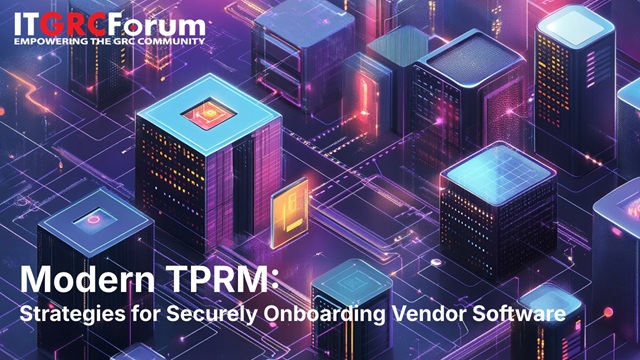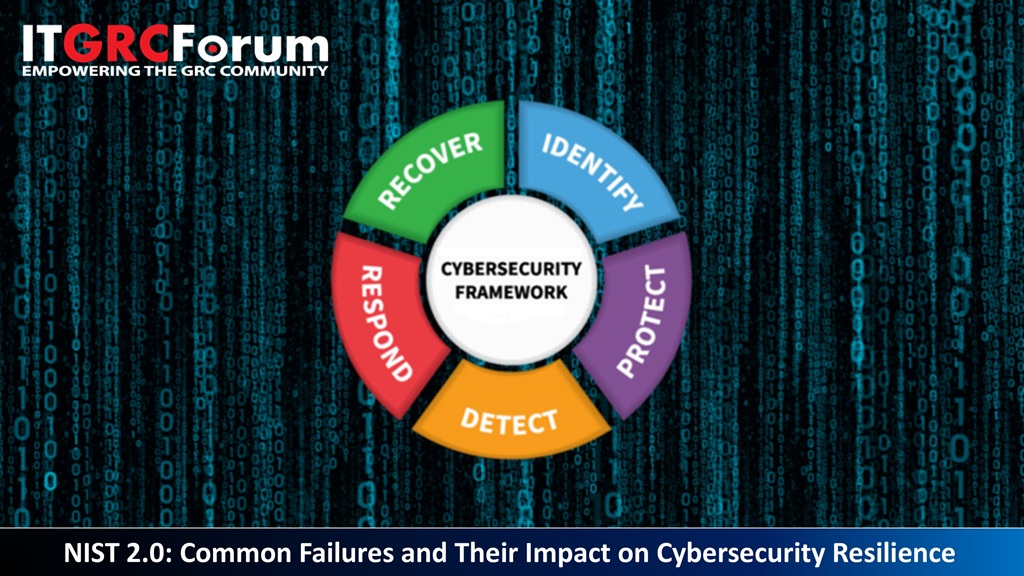Webinars:
Modern TPRM: Strategies for Securely Onboarding Vendor Software
Recorded: December 4 | 2025 Watch
From malware-laced updates to vulnerable open-source dependencies, attackers are increasingly targeting the vendor software that enterprises rely on to operate their business. According to a recent Gartner survey on Third Party Risk Management, 83% of Cyber risk professionals find risks embedded within vendor applications after deployment.
CPE | NIST 2.0: Common Failures and Their Impact on Cybersecurity Resilience
When: December 17 | 2025 Attend
This CPE webinar will explore real-world challenges in implementing the NIST Cybersecurity Framework 2.0 (CSF 2.0), examining their consequences and providing actionable strategies to strengthen cybersecurity resilience. Our panel will unpack the complexities of NIST 2.0, highlighting common pitfalls—from misaligned risk assessments and inadequate governance to weak supply chain risk management and inconsistent framework adoption.
Cornerstones to Strengthen Third-Party Risk Management
Recorded: March 24 | 2022 Attend
According to a recent survey by security vendor Anchore, 64% of businesses were affected by a supply chain attack in the past 12 months, and this year supplier attacks are expected to quadruple according to the European Union Agency for Cybersecurity. Third-party breaches can result in severe financial losses, downtime, loss of sensitive information, loss of reputation, breach of compliance, fines, and other legal liabilities.
Optimizing Controls to Mitigate Cybersecurity Risks
Recorded: June 23 | 2022 Attend
No matter how mature a cybersecurity program is, there always remains room for improvement. Digital transformation continually expands the scope of IT processes, and organizations continue to grapple with resource, staffing, and skill challenges.
Data Access Governance in the Digital Age
Recorded: May 18 | 2023 Watch
In today's digital world, data access governance has become a crucial aspect of protecting sensitive information. Organizations are facing increasing challenges when it comes to managing data access and ensuring the security of their critical data. Join our upcoming webinar to learn about best practices for data access governance and how Netwrix solutions can help simplify this task.
Increase Your Cyber Resilience & Regain Control of Your Security Program
Recorded: April 7 | 2022 Attend
Being a security professional has never been harder. The increasing threat environment, expanding attack surface, and continuous stakeholder demands for transparency are only adding to the challenges. It’s no wonder that Gartner’s latest report — “Predicts 2022: Cybersecurity” — states that cybersecurity leaders are “losing control” of decision making in an increasingly distributed ecosystem.
Cyber Risk Quantification: Turning the Dream into Reality
Recorded: July 14 | 2022 Attend
Cyber Risk Quantification can help CISOs financially quantify risk for senior executives, identify program gaps, and prioritize areas for improvement. Unfortunately, despite the obvious benefits, many CISOs are struggling to implement cyber risk quantification (CRQ)
Cyber Battle: Hacker vs Netwrix
Recorded: June 22 | 2023 Watch
Prepare to be captivated as Brian Johnson, a skilled white-hat hacker, embarks on a daring mission to infiltrate privileged accounts, with intentions ranging from illicit data acquisition to espionage and disruption of critical systems. The burning question lingers: Will he succeed in his audacious endeavors?
Data Privacy 101: Using Technology to Close the GRC Gap
Recorded: May 19 | 2022 Attend
Data privacy continues to make headlines and be a concern for many organizations. According to a recent study by CNBC, 23.1% of the 39 CFOs see cyber-attacks as the number 1 external risk to their company.
Top Regulatory & Compliance Trends Impacting Risk Management
Recorded: July 28 | 2022 Attend
The COVID-19 pandemic and increased geopolitical uncertainty has placed new priorities and responsibilities on the shoulders of risk and compliance professionals. Executives have realized that stronger ERM programs are required to remain competitive in this new era. Risk leaders, in turn, are looking beyond the urgent ERM measures required to handle the pandemic to how an effective enterprise risk management program can be a competitive differentiator for their companies.
TPRM Core Metrics to Track and How to Track Them
Recorded: June 1 | 2023 Attend
Third-party risk management (TPRM) is a crucial aspect of any organization's overall risk management strategy. With the increasing reliance on third-party vendors, contractors, and service providers, it's more important than ever to understand the risks associated with these relationships and take steps to mitigate them.
Aligning Third-Party Risk Controls to Your Security Framework
Recorded: April 21 | 2022 Attend
According to one study by Ponemon Research Institute, about 53% of organizations say they’ve had at least one third-party breach in the past two years with an average cost of $7.5 million dollars, and the majority of organizations still have immature third-party risk programs. As a result many organizations today are making deep investments into cybersecurity and implementing third-party risk assessment frameworks (such as NIST and ISO) to drive risk management and protect against constantly advancing cyber attacks.
How to Effectively Communicate Cybersecurity Risks to the Board
Recorded: August 25 | 2022 Attend
It has always been challenging for security leaders to communicate the value of cybersecurity investments to board. Giving transparency about the weakness of organizations can be pretty uncomfortable but, it is essential to increase the Cybersecurity level. As an IT Manager, CISO, or CSO, your understanding of risk and compliance is intimate and understood in infosec terminology. You must offer board executives a set of data to help them make informed decisions based upon the optimal management.















